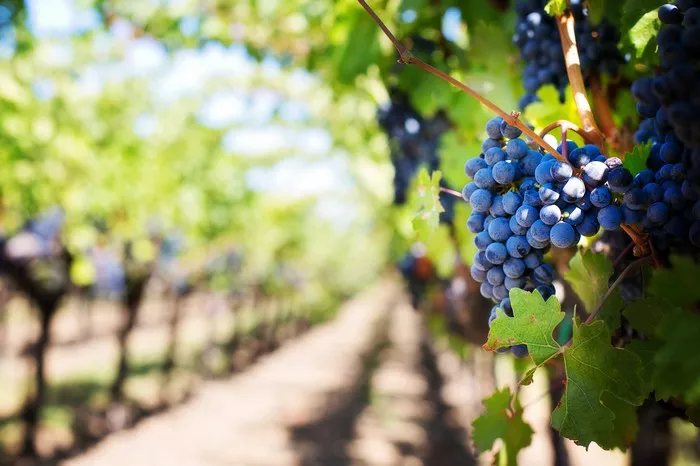Few mysteries in the world of viticulture and oenology spark as much curiosity as the question: “How many grapes are in a bottle of red wine?” This seemingly straightforward query encompasses the complexity of winemaking, involving a myriad of factors that influence grape-to-wine transformation. Understanding the grape-to-bottle journey is an intricate endeavor, merging science, artistry, and tradition.
The Origins: Grape Varieties and Wine Production
Exploring the enigma of grape quantity within a bottle of red wine inherently involves delving into the varietals used and the wine production process. Grapes destined for red wine are primarily red or black grape varieties. Renowned red grape varietals such as Cabernet Sauvignon, Merlot, Pinot Noir, and Syrah, among others, contribute distinct characteristics to the final wine.
The process of turning grapes into red wine begins with harvesting, where grape clusters are handpicked or mechanically harvested. Depending on various factors like grape type, vineyard conditions, and winemaker preferences, the number of grapes required for a single bottle of red wine can vary significantly. However, as a general estimation, it takes approximately 500 to 600 grapes to produce a single bottle of wine.
Vineyard Influences: Terroir, Climate, and Yield
The enigmatic question of grape quantity in a bottle of red wine can’t be answered definitively without considering the concept of terroir. Terroir encapsulates the environmental factors influencing grape cultivation, including soil composition, climate, altitude, and geographical location. These elements collectively impact grape yield and quality.
Climate plays a pivotal role in grape development and, subsequently, the wine’s character. Warmer climates often lead to riper, more sugar-rich grapes, while cooler regions produce grapes with higher acidity. The number of grapes needed for a bottle of red wine can vary based on these climate-induced variations in grape size, sugar content, and flavor intensity.
Moreover, vineyard practices and grape yield per acre also contribute to the equation. A vineyard’s yield management techniques, such as pruning methods, canopy management, and vine spacing, affect grape quantity and quality. Lower yield vineyards, where fewer grapes grow per vine, often produce more concentrated and flavorful wines but might require more grapes per bottle due to reduced overall grape count.
Grape-to-Wine Transformation: Crushing, Fermentation, and Aging
Understanding the journey from grapes to the bottled elixir involves a series of meticulous processes that transform harvested grapes into fine red wine. Once harvested, the grapes undergo crushing, where the skins are typically broken to release their juice, initiating the fermentation process.
During fermentation, yeasts convert sugars in the grape juice into alcohol and carbon dioxide. This fermentation stage, which may last days to weeks, depending on winemaker preferences, grape variety, and desired wine style, significantly impacts the wine’s taste, aroma, and structure. The quantity of grapes needed for a bottle of red wine intersects here, as the sugar content and volume of juice extracted from the grapes affect the final yield.
Post-fermentation, the wine often undergoes aging, which can take place in various vessels such as oak barrels or stainless steel tanks. This aging process, whether short or extended, contributes to the wine’s complexity, flavor profile, and texture. It’s crucial to note that during aging, some wine evaporates due to natural processes, further affecting the final volume of wine per bottle.
Factors Influencing Bottle Yield: Losses and Blending
The grape-to-bottle journey is not without its losses. Throughout the winemaking process, losses occur due to various reasons, including evaporation (known as the “angel’s share”), lees (sediment), and racking (transferring wine between barrels or tanks). These losses vary depending on winemaking practices, aging duration, and storage conditions, thereby impacting the number of bottles yielded from a batch of wine.
Additionally, blending plays a crucial role in wine production, especially in regions where winemakers combine different grape varieties or batches to achieve a desired flavor profile. This blending process introduces another layer of complexity when estimating the number of grapes in a bottle of red wine, as it might involve grapes from multiple vineyards or vintages.
Wine Industry Insights and Consumer Perspectives
From the vantage point of the wine industry, understanding the quantity of grapes in a bottle of red wine is essential for production planning, cost estimation, and quality control. Winemakers meticulously calculate grape quantities, considering various factors to maintain consistency in their wine offerings.
For consumers, this question often sparks curiosity and serves as an entry point into the intricate world of winemaking. While the exact number of grapes per bottle remains elusive due to the multifaceted nature of winemaking, this mystery fosters appreciation for the craftsmanship and dedication inherent in producing each bottle of red wine.
Conclusion: The Intricacies of Grape Quantities in Red Wine Bottles
The question, “How many grapes are in a bottle of red wine?” leads us on a captivating journey through the intricacies of viticulture and winemaking. While pinpointing an exact grape count remains elusive due to the multifaceted processes involved, understanding the influences of grape varietals, terroir, production methods, and industry practices sheds light on the complexity behind each bottle.
The enigma surrounding grape quantity in red wine bottles enriches the wine-drinking experience, encouraging curiosity and appreciation for the artistry and science encapsulated within every sip. It highlights the amalgamation of nature’s bounty, human expertise, and the storied tradition woven into each bottle of this cherished libation. Ultimately, the true essence lies not merely in the number of grapes but in the craftsmanship and passion that transform these humble fruits into an elixir that transcends time and borders.


